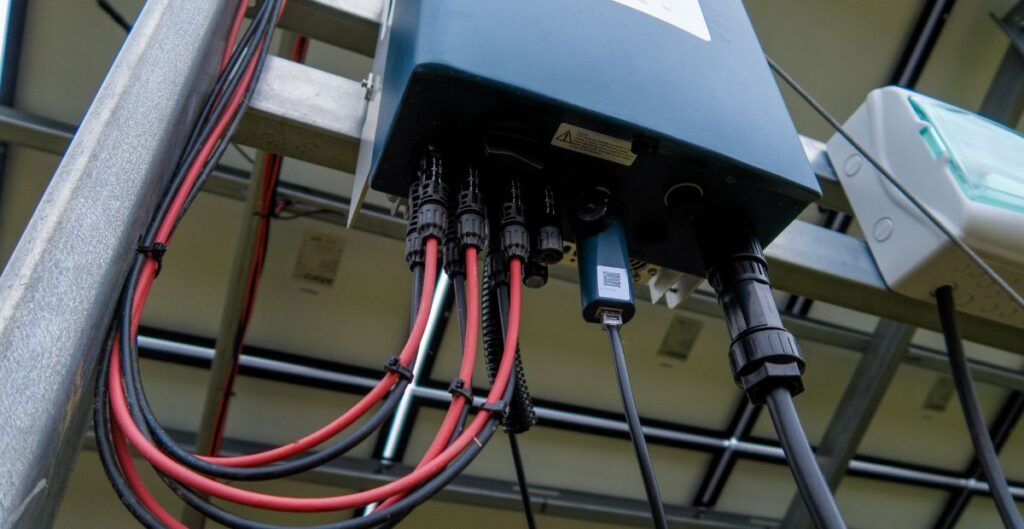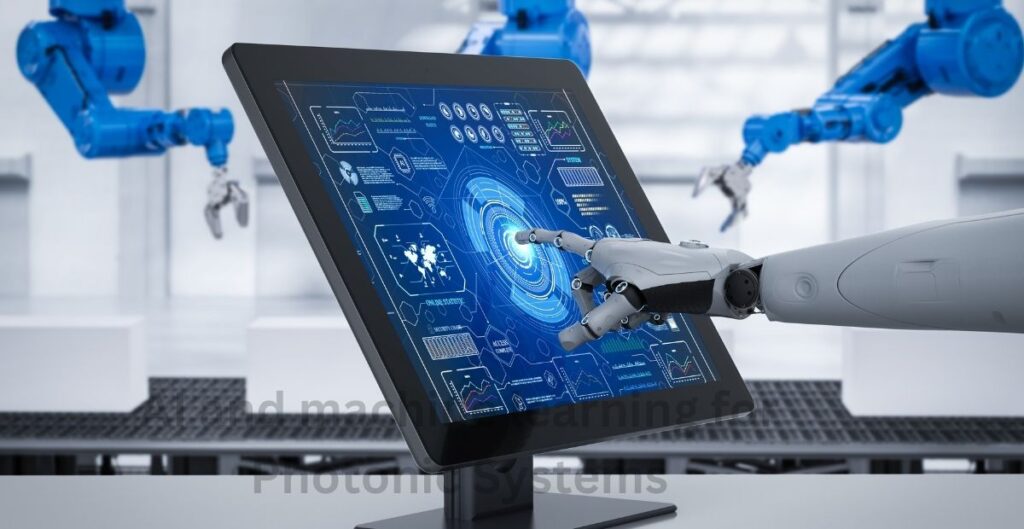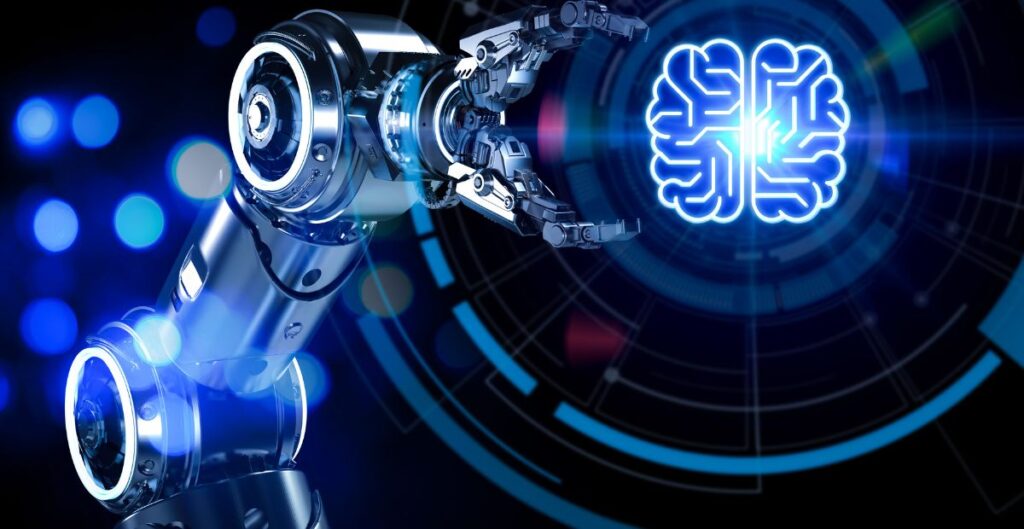A future solar inverter would learn how you use energy to optimize performance and achieve better efficiency. Sounds futuristic? Well, thanks to Machine Learning (ML) Inverter Control Topology, this is becoming a reality!
The following article presents complex information about this subject in a format suitable for 6th-grade students. This article explains the process of machine learning that enhances inverter intelligence together with its importance for practical use.
- What is an Inverter?
- Why Do We Need Machine Learning in Inverters?
- How Does Machine Learning Improve Inverter Control?
- Types of Machine Learning in Inverter Control
- Benefits of Machine Learning Inverter Control Topology
- How to Upgrade to a Smart ML Inverter?
- Is It Worth the Investment?
- Frequently Asked Questions (FAQs)
- Conclusion
What is an Inverter?
Before exploring machine learning inverter control topology, let’s first get a clear idea of what an inverter actually does.
Solar power produced by panels or batteries uses an inverter to transform its DC (Direct Current) format into AC (Alternating Current) electricity which supplies your standard household equipment.
A toy car powered by AA batteries represents direct current (DC power) which needs an inverter to connect to an alternating current (AC power outlet). The conversion needs an inverter unit to turn DC power into AC electricity.
Why Do We Need Machine Learning in Inverters?
Traditional inverters follow simple, fixed rules. They turn on and off based on basic voltage readings. But they don’t adapt to changes in energy demand, sunlight, or grid conditions.
This is where machine learning comes in! With AI-driven algorithms, inverters can:
- Predict and adjust power flow based on your usage.
- Improve energy efficiency by learning from past data.
- The system detects system failures and operational issues in advance thus saving financial expenses.
- Your system should optimize its battery storage operations to prevent power interruptions.
How Does Machine Learning Improve Inverter Control?
Think of a smart inverter like a self-driving car. The system takes input data to create decisions that evolve into better performance through the process of time.
Step-by-Step Process:
- Data Collection: The inverter collects data on power consumption, grid voltage, and solar energy production.
- Pattern Recognition: ML algorithms analyze this data to identify trends and inefficiencies.
- Real-Time Adjustments: Based on the insights, the inverter adjusts power flow and battery charging.
- The system develops improved functionality through its experience with past performance.
👉 Example: The washing machine turns on automatically at 6 PM during each day. A smart inverter will learn this pattern and prepare energy for it in advance.
Types of Machine Learning in Inverter Control
There are several ways machine learning can help inverters:
1. Supervised Learning
- The inverter is trained using historical energy consumption data.
- Example: Predicting when solar panels will generate the most energy.
2. Unsupervised Learning
- The system detects abnormalities in energy use without prior data.
- Example: Identifying unusual energy spikes that could indicate a problem.
3. Reinforcement Learning
- The inverter learns from trial and error, improving over time.
- Example: Adjusting battery charging levels according to the weather or season.
Benefits of Machine Learning Inverter Control Topology
✅ 1. Higher Efficiency
Machine learning inverters maximize energy efficiency, making sure more solar power is used and less is wasted.
✅ 2. Cost Savings
By reducing energy waste, users can save on electricity bills.
✅ 3. Increased Battery Life
ML algorithms help optimize battery charging cycles, leading to longer battery lifespan.
✅ 4. Grid Stability
Smart inverters operate to keep electrical grids stable which produces a continuous power supply that avoids blackouts in electrical grids.
✅ 5. Environmental Impact
These systems are environmentally friendly because they use more renewable energy and help reduce carbon emissions.
How to Upgrade to a Smart ML Inverter?
If you’re interested in upgrading, Here is the process to upgrade:
Figure out the amount of energy: The daily usage to evaluate your requirements.
- Compatibility check stands: To make sure that your solar panels along with batteries match with ML-based inverters.
- Choose a Trusted Brand: Look for reliable inverters with AI features.
- Work with an accredited professional technician: Since they provide safety assurance during installation routines.
- Tracking performance enhancement: For your inverter system should be done through its mobile application or dashboard.
👉 Pro Tip: Check out Tesla, SMA, and Enphase for AI-powered inverters.
Is It Worth the Investment?
Absolutely! Initial expenses for machine learning inverters yield significant long-term advantages that justify their increased initial cost:
- Quick Payback: You could save enough energy in 3-5 years to cover the cost.
- Government Incentives: Many places offer tax credits or rebates for smart solar upgrades.
- Future-Proof Technology: Your inverter will maintain its relevance throughout several years which enables it to adjust according to evolving energy requirements.
Frequently Asked Questions (FAQs)
1. What is machine learning inverter control topology?
Machine learning inverter control topology refers to the use of AI-driven algorithms in solar inverters to improve their performance by learning from data patterns and adapting them in real-time.
2. How does machine learning make inverters smarter?
Machine learning helps inverters analyze energy consumption data and make adjustments based on trends. This leads to better efficiency, cost savings, and increased battery life.
3. What are the benefits of machine learning inverters?
Several advantages result from its implementation including improved energy efficiency with money savings along with extended battery existence and better grid stability and environmental sustainability.
4. How do I upgrade to a smart inverter?
To upgrade, you should first assess your energy needs, ensure compatibility with your solar system, and select a trusted brand. Professional installation is recommended.
5. Are machine learning inverters worth the investment?
Yes! The high price of machine learning inverters leads to significant bill savings and future-proofing capabilities because these inverters can learn from energy needs and adjust accordingly.
Conclusion
The future of energy is here, and it’s smart! Machine learning inverter control topology is revolutionizing the way we use solar energy. Users who are both homeowners and business owners can achieve cost reduction paired with efficiency upgrades while decreasing their environmental impact through smart inverter selection.
Explore on the machine learning inverter world now to gain full control over your energy consumption practices 🚀.






